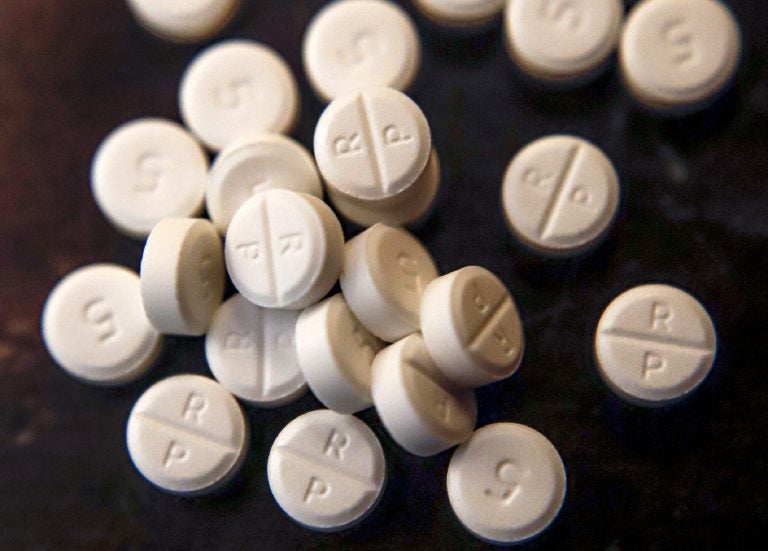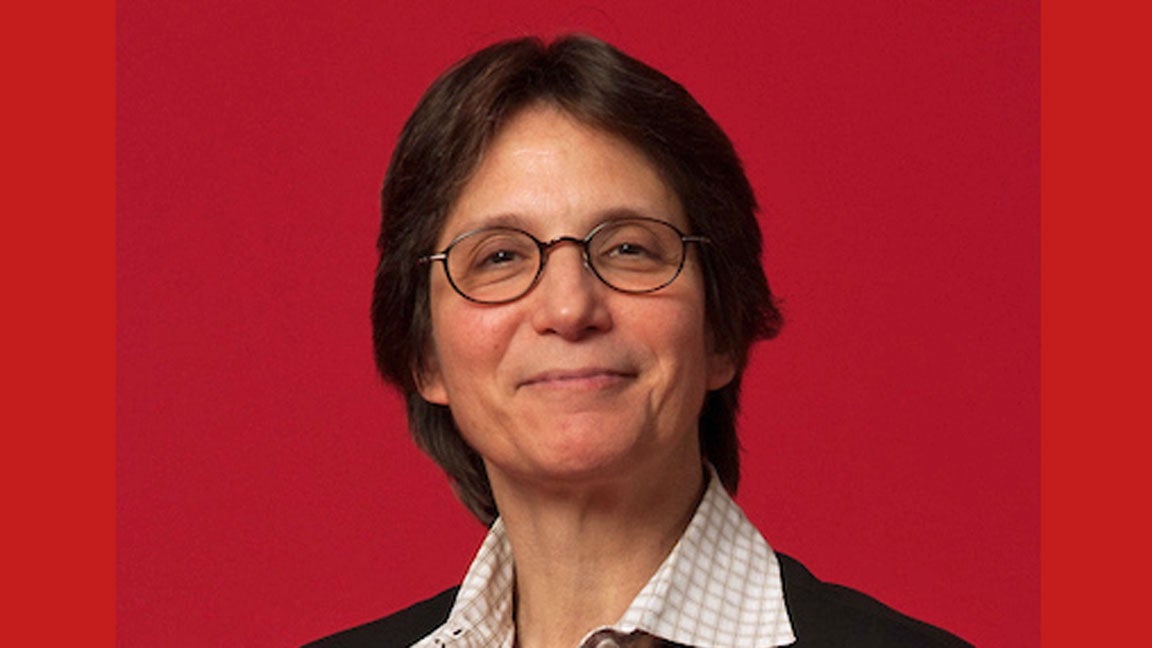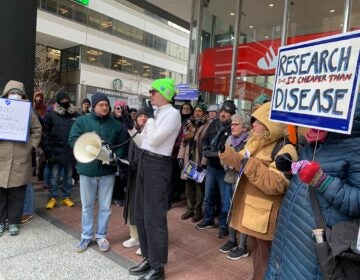Rutgers Dental researchers to lead landmark study of opioid alternatives
National Institutes of Health award $11.7 million to university to spearhead project comparing narcotic and non-narcotic pain medicine treatments

This Monday, June 17, 2019, file photo shows 5-mg pills of Oxycodone. (Keith Srakocic/AP Photo, File)
This article originally appeared on NJ Spotlight.
—
Could a combination of common non-narcotic pain medicines be an effective alternative to opioids after dental surgery? That’s the question researchers at Rutgers School of Dental Medicine and four other universities will study as part of a unique, multi-year initiative funded by the National Institutes of Health.
Rutgers will lead the study, which also will consider how these treatment choices impact the potential for addiction.
The NIH announced Monday it had awarded $11.7 million to Rutgers to spearhead the collaborative project, which will be the first to compare these two treatments within a large group of dental patients. The study will also explore how gender differences impact pain and its treatment, something that has not been examined before, and will consider the side effects of each option and its impact on quality of life.
Rutgers will recruit some 1,800 patients from their own Newark dental program and from similar programs at the other participating universities; all will be there for molar extractions, a common procedure that often results in pain medication prescriptions. Half of this group will be prescribed Vicodin — a brand-name mix of acetaminophen and hydrocodone, an opioid — which is one of the most commonly used medications in oral surgery; others will get acetaminophen and ibuprofen, non-opioids that are also available without a prescription.
Trying to reduce ‘epidemic levels of opioid abuse’

Rutgers dental school dean Cecile Feldman, the principal investigator, said dental clinics are ideal settings for this research because oral surgeons prescribe opioids at fairly high rates.
“A large part of our job is managing acute and chronic pain,’’ she said. “We’re very hopeful that the results of our research could significantly reduce America’s epidemic levels of opioid abuse while still providing relief for pain.”
While opioid prescriptions are now on the decline in New Jersey — dropping by nearly 40% from 2014 through July 2018 — addiction has touched hundreds of thousands of people in the Garden State; it contributed to more than 3,000 deaths last year. Tens of thousands of drug users seek treatment annually, and many more are unable to access services.
According to the American Dental Association, dentists were the specialists prescribing the greatest number of opioids two decades ago, but that trend has since declined. In recent years, the ADA has adopted policies that require additional training for dentists on the dangers of these drugs, endorsed state laws and policies limiting initial opiate prescriptions, and encouraged its members to use prescription-monitoring databases that can help flag patient and provider abuse.
Dentists rank first in juvenile opiate prescriptions
An academic analysis of nearly 80 million opioid prescriptions conducted in 2009 found dentists had fallen to third — after primary care doctors, who treat adults and children, and internists, who care for adults alone — for their opiate prescribing rate, writing 8% of these scripts among the general public. But for patients between 10 and 19, dentists led the pack of prescribers, dispensing opioid scripts to nearly one-third of the patients in this age group, more than double the prescribing rate of primary care doctors or emergency physicians for this cohort.
Feldman noted that the high rate of juvenile prescriptions reflects, in part, the fact that third molars — also known as wisdom teeth — generally emerge (and require removal) when people reach their late teens or early 20s. In addition, dental pain at any age is “excruciating and unrelenting,” she said, speaking from personal experience. “You will do anything to try and stop it. You can’t eat, you can’t sleep, you can’t function. It is all-consuming,” she recalled.
Dentists are eager to help their patients in ways that don’t compromise their quality of life, Feldman noted. Pilot studies have shown dental patients who receive a combination of acetaminophen (commonly sold under the brand-name Tylenol) and ibuprofen were able to control their pain effectively while experiencing fewer side effects than with opioids, she said.
Avoiding side effects
The goal of the new study is to provide concrete evidence so practitioners will be confident in prescribing the non-opioid rather than opioid, Feldman explained. “The pain isn’t the only thing you need to take into consideration,’’ she added. “People will put up with a slightly higher level of pain if they can avoid side effects and have a higher quality of life during the recovery period.’’
The trial, which will take at least a year to get started, is also designed to effectively mimic real dental practice, Feldman said, something that had not been a focus in previous research. Researchers will track both groups of patients in the study for how and when they used their respective medications for up to seven days after their procedure, noting how the medications worked to address their pain and any side effects.
“We want, as much as possible, to duplicate real-life conditions in the clinic,’’ Feldman said.
In addition, researchers will follow the patients to see if individuals who received opioids are more likely to use or abuse these drugs over time. In total, the funding will pay for six years of preparatory work, study and analysis.
In addition to the Rutgers portion of the study, Feldman will oversee related research conducted through dental clinics at the University of Illinois at Chicago; the University of Michigan; the University of Maryland at Baltimore; and the University of Rochester, in upstate New York. Each program serves different populations of patients, which means the study will cover a wide range of demographics, and the results should widely be applicable to the public at large, Feldman said.
WHYY is your source for fact-based, in-depth journalism and information. As a nonprofit organization, we rely on financial support from readers like you. Please give today.




